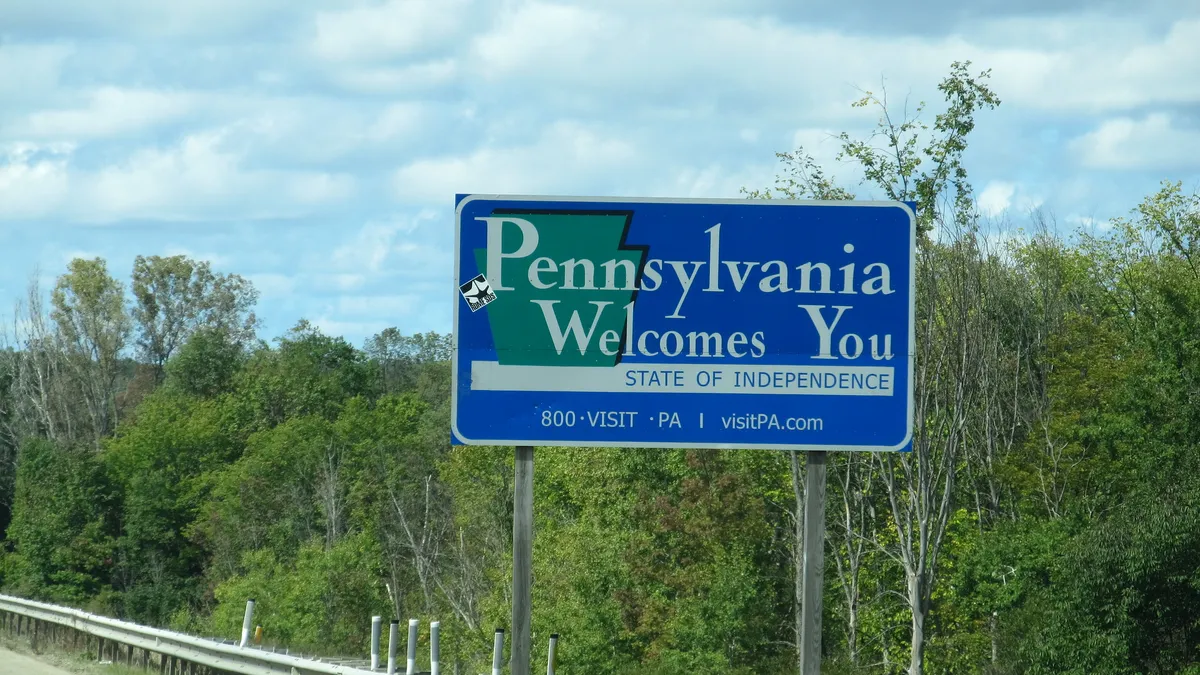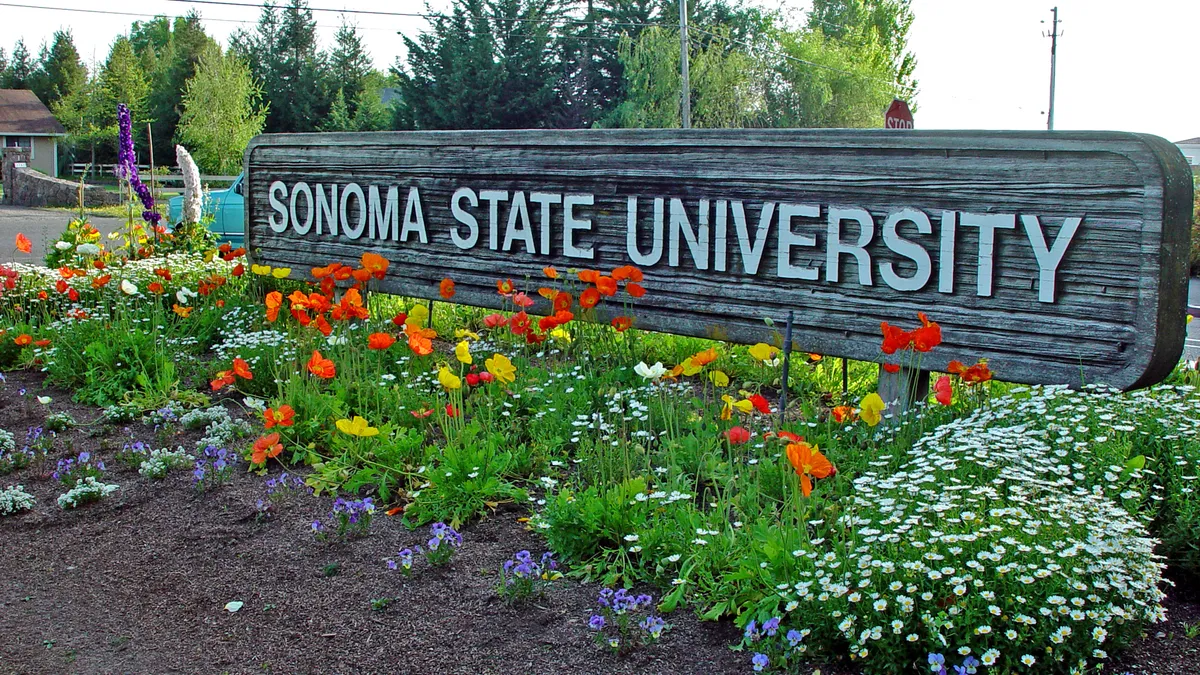The Pennsylvania State System of Higher Education formed nearly four decades ago with a mandate to give Pennsylvania's low- and moderate-income families access to "high quality education at the lowest possible cost."
But for years, it has been bedeviled by inhospitable demographics and lackluster state investment that have left it cash-strapped and wanting for students.
These challenges are often the focus of soundbites used to explain the system's financial woes and the reasoning behind its recent consolidation efforts. PASSHE intends to integrate six of its universities into two separately accredited entities that would retain their names and brands but would each operate with a singular programming array and leadership slate.
A more complete explanation of the system's troubles, however, also involves discussion of the state's extraordinary higher education landscape. The 14 PASSHE schools face deep competition with wealthier and better-known state institutions — including the multicampus Pennsylvania State University and the University of Pittsburgh — that receive public funding but function with more autonomy.
The toxic combination of a saturated higher education market, poor demographics and diminished funding has observers skeptical that PASSHE's merger plan alone will let it overcome its financial struggles. It is in desperate need of more state money, they say.
"This all ties to a willingness to provide funding to make education affordable," said Andrew Koricich, a higher education professor at Appalachian State University, in North Carolina, who has researched PASSHE extensively.
A saturated market
PASSHE's troubles began brewing in the wake of the Great Recession.
Its enrollment peaked in 2010 and has since plummeted about 20%. Research documents a shrinking pool of Pennsylvania high school graduates, from which PASSHE overwhelmingly draws its students. The countercyclical postsecondary enrollment trend also spelled trouble, as students typically flock to college during periods of economic contraction, said Marc Stier, director of the Pennsylvania Budget and Policy Center, a research and policy development group. As the economy recovered from the recession, fewer students sought shelter from the down job market at colleges.
Shrinking state support compounded the lost tuition revenue. The drop was driven in large part by aggressive higher education spending cuts by former Gov. Tom Corbett, a Republican, who took office in 2011. The system documented an 18% decrease in state appropriations from 2010-11 to the next fiscal year.
In response, PASSHE turned to tuition hikes, a move threatening to disadvantage the very working-class students the system was designed to serve. PASSHE's in-state undergraduate tuition rose from $5,804 in 2010-11 to $7,716 today, according to the system — a roughly 33% increase.

Corbett's cuts were devastating for PASSHE, said Jamie Martin, president of the system's faculty union, the Association of Pennsylvania State College and University Faculties. Martin was teaching at a PASSHE school during the former governor's tenure.
"What was really heartbreaking for me was students begin to struggle with the cost," she said. "They were working multiple jobs to attend, and were seeking out food pantries because of being food insecure."
Pennsylvania's more affluent, state-related colleges could weather the cuts better, Koricich said. These institutions, which include Penn State and the U of Pittsburgh, receive public money but aren't run by the state, and they set their own tuition and fees. They also aren't completely subject to Pennsylvaia's transparency and disclosure laws for state entities. Because the state doesn't have as much control over them as it does PASSHE schools, they haven't needed to consider whether their offerings would overlap with PASSHE's, Koricich said.
Penn State represents a particular headache for PASSHE, he said. The university runs 24 physical campuses, many of which are near PASSHE schools and are seen as competing with them for students, further cutting into the system's prospects, though they're about the same size. Penn State enrolled around 91,000 students in 2019, compared to PASSHE's nearly 96,000.
"Penn (State) has done a very good job sucking up as much air as they can," Koricich, a Pennsylvania native and Penn State alumnus, said.
Are mergers enough?
PASSHE leaders have rejected one of the more extreme methods of tackling budgetary woes: campus closures. This is despite the financial difficulties many of its institutions are experiencing.
One of them, Cheyney University, the oldest historically Black college in the U.S., at one point owed the system more than $40 million, about $10 million more than its annual budget. Most of its debt was forgiven. However, its enrollment still dropped from 1,667 students in the 2006-07 academic year to 618 last year.
Only one PASSHE school, West Chester University, has seen consistent enrollment growth, reaching nearly 17,700 students last academic year, and more than doubling its headcount from before the Great Recession. West Chester is one of the biggest names within the system and is located in the outer suburbs of Philadelphia, a more affluent area compared to locations of other PASSHE schools, Koricich said.
It and the second-largest PASSHE institution, Indiana University, were excluded from state legislation that enabled the system to pursue the mergers. More than 10,600 students attended Indiana U last year, though its enrollment is in decline.
Officials are attempting to unify California, Clarion and Edinboro, in the western part of the state, and Bloomsburg, Lock Haven and Mansfield in the north and east. The former trio would focus on online education and the latter on stackable credentials, tapping a contingent of students who could meet the area's workforce needs or might not be looking for a four-year degree. The resulting two entities would have enrollments bigger than Indiana U, with one nearly as large as West Chester.


Many aspects of the integrations remain unknown to the public, however, Martin said. Officials say they want to reduce students' cost of attendance by 25% but haven't detailed how they would accomplish that. Some faculty within the system doubt they could bring down those costs without more state funding, she said.
Other features of the merger proposal seem impractical, Martin said, such as having a single president overseeing three campuses. The State University of New York system at least twice attempted to have one leader supervising multiple institutions, but eventually switched back.
The consolidation effort has generated neither harsh criticism nor ardent support from the public, and it has garnered a mixed reaction from state lawmakers so far.
More state money needed
PASSHE's faculty union remains frustrated that the system hasn't pressed state officials harder for more money, Martin said, especially in light of expectations it will lay off around 100 faculty members. In January 2020, system Chancellor Daniel Greenstein asked the state for only a 2% increase in appropriations, to $487 million, as well as a separate, $20 million installment for the system redesign, which goes beyond the mergers and system officials estimate to be a $100 million project. They have not received the additional funding for the redesign.
The system also didn't get the full amount of appropriations it requested. Gov. Tom Wolf, a Democrat, gave the system $477 million in his 2020-21 budget. With the state facing a budget crunch, he set aside the same amount in his budget plan for the upcoming year. Wolf also proposed repurposing $199 million in slot machine revenue that would provide scholarships to full-time PASSHE undergraduates with a household income of under $104,800. The governor's office estimates it would benefit at least 44,000 students.

System spokesperson David Pidgeon did not directly answer an emailed question asking whether the state has adequately funded the system in recent years.
The integrations are meant in part to address the system's challenges, including its level of state funding, Pidgeon wrote in an email. They also demonstrate to the legislature and governor that the system is willing "to get creative" and "to confront challenges head on," he wrote.
"Integrations grew out of initiatives to help stabilize financially the universities in the System, to ask how each of our campuses can balance budgets, build cash reserves, and provide the full breadth of academic programming necessary to be an accredited university," Pidgeon wrote.
Koricich isn't surprised PASSHE hasn't pushed harder for more funding. The system has limited political capital and doesn't have the clout of Penn State, he said.
"When you're the lightweight, you fight for yourselves without taking swipes at someone else in the process," he said.
But the system's difficulties aren't expected to disappear any time soon.
"The leadership of PASSHE is buying into the story of enrollment declines and needing to shrink the system. But what we need to do is be educating more students, and educating the bottom income brackets."

Marc Stier
Director, Pennsylvania Budget and Policy Center
The pandemic continues to wreak havoc on its budgets. And it is bracing for a drop-off in traditional-age college students in the next decade, a nationwide phenomenon. (However, one analysis from 2014 forecasts the number of Pennsylvania teens will remain relatively flat and the number of young adults ages 20 to 24 will increase modestly by 2040.)
Despite its budget problems, the system should not be limiting opportunities for its students, said Stier, of the Budget and Policy Center.
"The leadership of PASSHE is buying into the story of enrollment declines and needing to shrink the system," he said. "But what we need to do is be educating more students, and educating the bottom income brackets."






















